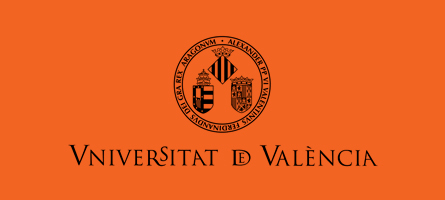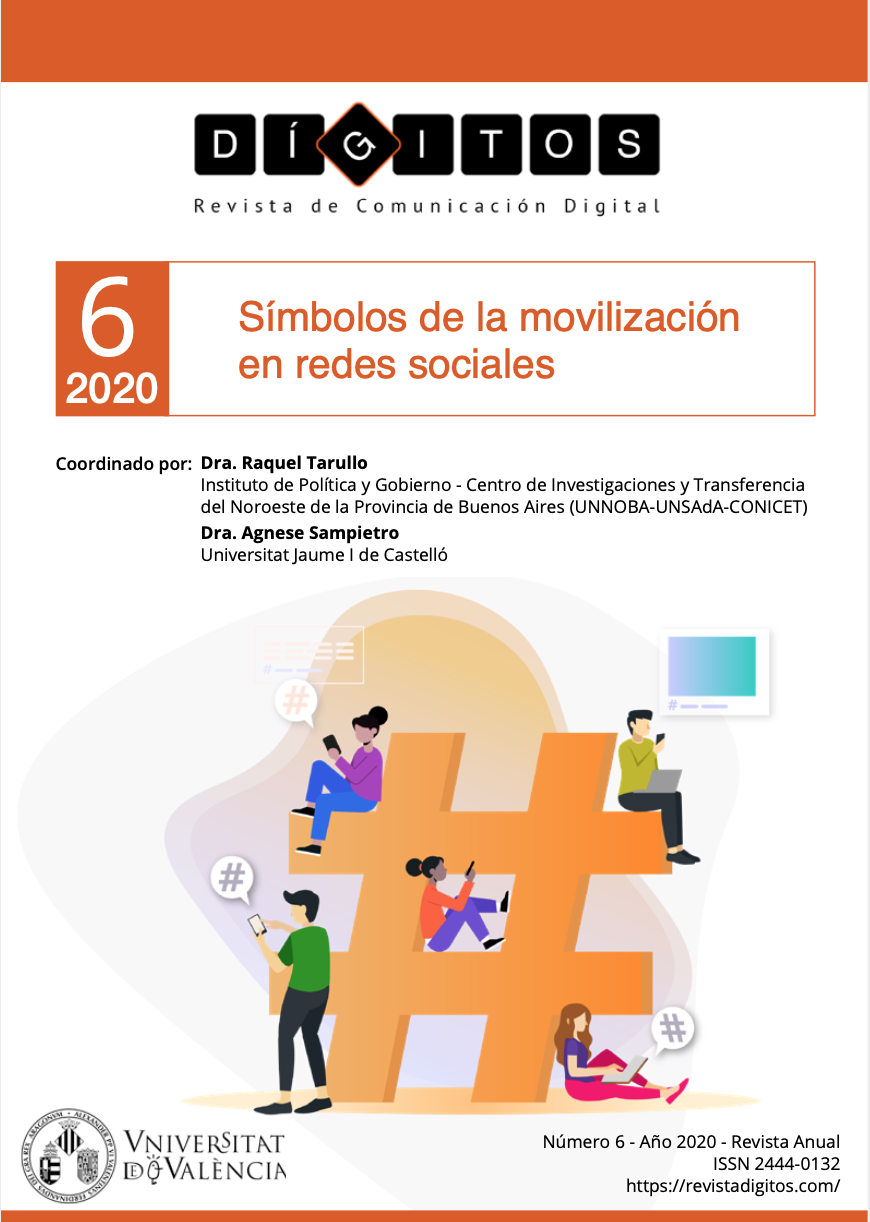La agenda building de los partidos políticos españoles en las redes sociales: Un análisis de Big data
DOI:
https://doi.org/10.7203/rd.v1i6.165Resumen
Las redes sociales irradian un flujo de información de opinión horizontal y multimodal que ha abierto nuevos horizontes al análisis de los fenómenos políticos. La ac- ción agregada de los ciudadanos en este nuevo ámbito permite orientar la agenda política del país e influir en la toma de decisiones públicas. El conocimiento de lo que ocurre en las redes deviene, pues, un objeto de estudio de primer interés. En este trabajo se utilizan metodolo- gías sobre plataformas Big Data para analizar la evolución temporal de la agenda política marcada por los partidos políticos en las redes sociales, alguna de cuyas dimen- siones quedan descritas mediante técnicas apropiadas de visualización. En la comunicación, que asume el mar- co teórico y metodológico del comportamentismo, se abordan, en primer lugar, las aproximaciones teóricas al fenómeno de la agenda setting o agenda building y las im- plicaciones que la aparición de las redes sociales digitales ha tenido en este terreno; en segundo lugar, las fuentes teóricas y procedimientos metodológicos de los análisis realizados en plataformas Big Data; y, en tercer lugar, un estudio empírico centrado en el estudio del uso de las re- des por parte de algunos partidos políticos relevante de nuestro país, de sus militantes y de sus simpatizantes. Los resultados del estudio y su descripción a través de nubes de palabras permite hacerse una idea cabal sobre la ima- gen diferenciada que los partidos trasladan, consciente o inconscientemente, a los ciudadanos y ciudadanas que participan en la red y de la importancia que adquiere su control en su actividad diaria.Citas
Aruguete, N. (2015). El poder de la agenda. Política, medios y público. Argentina: Biblos / Cuadernos de Comunicación.
Becker, L., McCombs, M., & McLeod, J. (1975). The Development of Political Cognitions. In Chafee, S. C. (Ed.) Political Communication: Issues and Strategies for Research. London: Sage.
Boyd, D. M. & Ellison, N. B. (2007). Social Network Sites: Definition, History, and Scholarship. In Journal of Computer-Mediated Communication 13.1, 210-230. issn: 1083-6101. doi: 10.1111/j.1083-6101.2007.00393.x. url: http://dx.doi. org/10.1111/j.1083-6101.2007.00393.x.
Cohen, B. (1963). The Press and the Foreign Policy. Pricenton, NJ: University Press.
Dean, J. & Ghemawat, S. (2004). MapReduce: Simplified Data Processing on Large Clusters. In Dokoohaki, N. & col. (2015). Predicting Swedish elections with Twitter: A case for stochastic link structure analysis. In 2015 IEEE/ACM International Conference on Advances in Social Networks Analysis and Mining (ASONAM), 1269-1276. doi: 10.1145/2808797.2808915.
Fatta, G. Di & col. (2015). Big Social Data and Political Sentiment: The Tweet Stream during the UK General Election 2015 Campaign. In 2015 IEEE International Conference on Smart City/SocialCom/SustainCom (SmartCity), 293-298. doi: 10 . 1109 / SmartCity.2015.87.
Festinger, L. (1975). La teoría de la disonancia cognoscitiva. Madrid: Instituto de Estudios Políticos.
Fleur, M. L. de & Ball-Rokeach, S. (1986). Teorías de la comunicación. Barcelona: Paidós.
Ghemawat, S., Gobioff, H. & Leung, S. (2003). The Google File System. In Hasan, M. y col. (2017). Using Social Sensing to Discover Trends in Public Emotion. In 2017 IEEE 11th International Conference on Semantic Computing (ICSC), 172-179. doi: 10.1109/ICSC .2017.76.
Kwak, H. & col. (2010). What is Twitter, a social network or a news media? In Proceedings of the 19th International Conference on World Wide Web. WWW ’10. Raleigh, North Carolina, USA: ACM, 591-600. doi: 10. 1145/1772690 .1772751. url: http://doi.acm.org/10.1145/1772690.1772751.
Iguarta, J. J. & Humanes, M. L. (2004). Teoría e investigación en comunicación social. Madrid: Síntesis.
IntelligenceCompass (2010). Informe sobre políticas y redes sociales: https://mouriz.files.wordpress.com/2010/10/informe-politicos-y-redes-sociales.pdf
Katz, E. & Lazarsfeld, P. F. (1975). La influencia personal. Barcelona: Hispano Europa.
Kosicki, G. (1993): Problems and opportunities in agenda setting research. Journal of Communication 43.
Lazarsfeld, P. F., Berelson, B. B. & McPhee, W. (1954). Voting: a Study of Opinion Formation During a Presidential Campaign. Chicago: University of Chicago Press.
Lippmann, W. (2003). La opinión pública. Madrid: Langre.
López García, G. (2006). Comunicación digital y líneas de fractura en el paradigma de la agenda setting. Doxa Comunicación 4, 37-58.
Mayank, D., Padmanabhan, K. & Pal, K. (2016). Multisentiment modeling with scalable systematic labeled data generation via word2Vec clustering. In 2016 IEEE 16th International Conference on Data Mining Workshops (ICDMW), 952-959. doi: 10.1109/ICDMW.2016.0139.
McCombs, M. (2006). Estableciendo la agenda. Barcelona: Paidós.
McCombs, M. & Shaw, D. (1972). The agenda setting function of mass media. Public Opinion Quarterly, 31, 2.
McCombs, M. & Shaw, D. (1977). Agenda Setting and the Political Process. In Shaw, D. y MacCombs, M. (Eds.) The Emergence of American Political Issues: the Agenda Setting Function of the Press. St. Paul, Minnesota: West Publishing Co.
Noelle-Neumann, E. (1995). La espiral del silencio. Barcelona: Paidós.
Novak, P. K. & col. (2015). Sentiment of Emoji. In CoRR abs/1509.07761. url: http://arxiv.org/abs/1509.07761. Romero, R. C. (2015). Politics 2.0 ICTs in Costa Rica’s 2014 Presidential Campaign. In 2015 International Conference on Information Society (i-Society), 115-120. doi: 10.1109/i- Society.2015. 7366870. – (2016). Internet politics: Towards a social networking typology 2014; Costa Rica municipal elections analysis. In 2016 International Conference on Information Society (i-Society), 149-154. doi: 10.1109/i-Society.2016.7854201.
Rubio Ferreres, J. M. (2009). Opinión pública y medios de comunicación. Teoría de la agenda setting. Gaceta de Antropología, 24.
Sartori, G. (2007). Qué es la democracia. Madrid: Taurus.
Shafiq, M. Z. & col. (2013). Identifying Leaders and Followers in Online Social Networks. In IEEE Journal on Selected Areas in Communications 31.9, 618-628. issn: 0733-8716. doi: 10.1109/JSAC.2013.SUP.0513054.
Solis, D. (2001). Ponencia Jornadas sobre Gestión en Organizaciones del Tercer Sector en la Universidad Di Tella de Buenos Aires: https://prezi.com/7wyjlkxnv1ot/ponencia-jornadas-sobre-gestion-en-organizaciones-del-terce/
Vara Miguel, A. (2001). La influencia de los partidos políticos en la construcción de la agenda mediática y el rol de los periodistas como mediadores sociales. Aproximación teórico-práctica a las teorías de la agenda setting y de la agenda building. Tesis doctoral. Pamplona: Universidad de Navarra.
Wang, H. & col. (2012). A System for Real-time Twitter Sentiment Analysis of 2012 U.S. Presidential Election Cycle. In Proceedings of the ACL 2012 System Demonstrations. ACL ’12. Jeju Island, Korea: Association for Computational Linguistics, 115-120. url: http://dl.acm.org/citation.cfm?id= 2390470.2390490.
Watts, D. & col. (2016). Tweet sentiment as proxy for political campaign momentum. In 2016 IEEE International Conference on Big Data (Big Data), 2475-2484. doi: 10.1109/BigData.2016.7840885.
Yeruva, S. & Devi, T. (2014). A Study on Direct Influence in Online Social Networks. In 2014 International Conference on Intelligent Computing Applications, 387-391. doi: 10.1109/ICICA.2014.85.
Weaber, D. H., Graber, D. A., McCombs, M. & Eyal, C. H. (1981). Media agenda setting in a presidential election. New York: Praeger.
Descargas
Publicado
Número
Sección
Licencia
Los autores conservan los derechos de autor y garantizan a la revista el derecho de ser la primera publicación del trabajo, licenciado bajo una Creative Commons Attribution License que permite a otros compartir el trabajo con un reconocimiento de la autoría del trabajo y la publicación en esta revista.
Cuando el autor/a envía su colaboración está explicitamente aceptando esta cesión de derechos de edición y de publicación. Igualmente autoriza a Dígitos la inclusión de su trabajo en un número de la revista para su distribución y venta.







